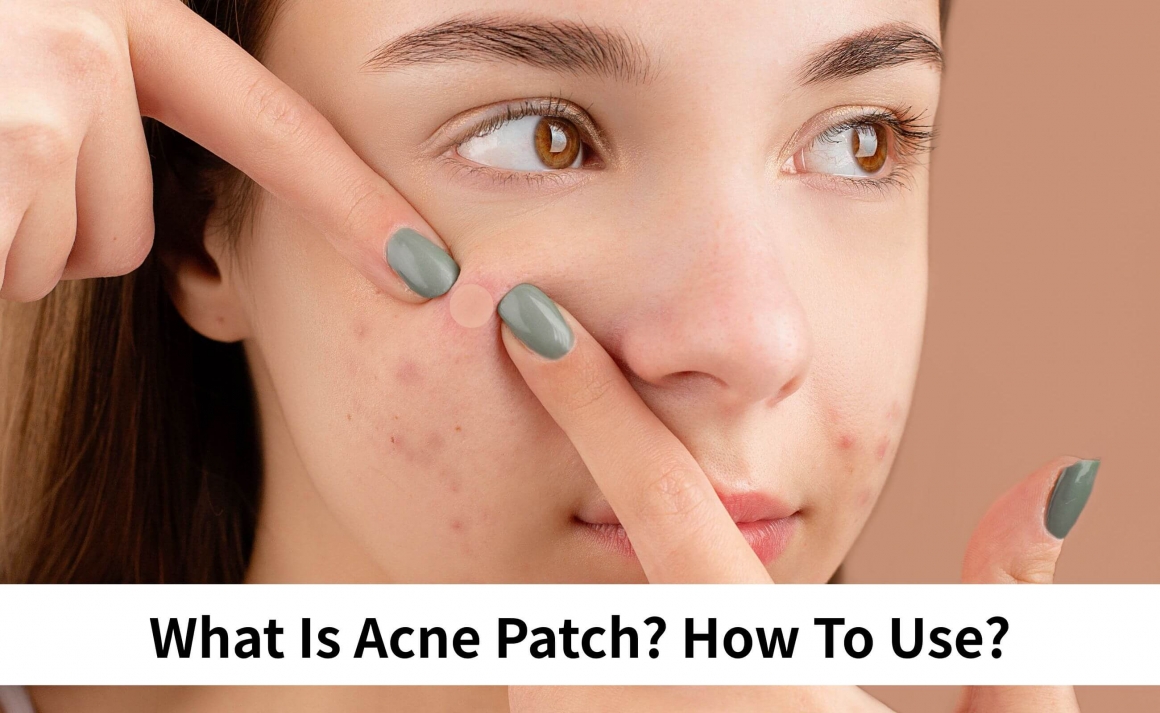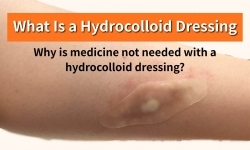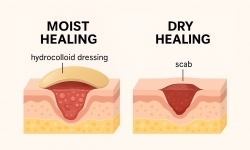28.Oct.2025
What Is a Acne Patch for Pimple? How to Use?
What Is a Pimple Patch and How To Use It?
What Is an Acne Patch for Pimple?
An acne patch for pimples is a small skincare sticker designed to treat acne. Its main material is a hydrocolloid dressing. This hydrocolloid layer absorbs oil, pus, and exudate from the acne while maintaining a moist healing environment that helps the skin repair faster and more effectively.
An acne patch can:
Why Does the Center of an Acne Patch Turn White and Swell?
This reaction is completely normal and shows that the patch is working. The hydrocolloid material absorbs oil and pus, swelling as it collects fluids. The white color indicates that the patch’s absorption layer has been activated.
Why Does It Turn White?
When the patch is applied to a pustular pimple, the hydrocolloid absorbs the fluid and transforms into a soft, white gel-like substance. This means the pus has been effectively drawn out of the skin.
When Should You Replace It?
Once the center of the acne patch turns white and expands, it has reached its absorption limit. Replace it with a fresh patch to maintain hygiene and continued effectiveness.
Why Does My Acne Patch Turn White?
The white spot on the patch is a combination of pus, sebum, and exudate that has been absorbed from the acne. The hydrocolloid locks these fluids inside and turns into a soft white gel, preventing leakage and blocking bacterial infection.
This whitening effect indicates that the acne patch is actively working — drawing out fluids, reducing inflammation, and creating a clean, moist environment that promotes faster skin healing.
7 Steps to Use an Acne Patch Properly
Can You Wash Your Face or Shower While Wearing an Acne Patch?
Yes, you can. Most acne patches are waterproof and can stay on during face washing or showering. However, avoid excessive rubbing or soaking, as this may weaken the adhesive and cause the patch to fall off.
After cleansing, check if the patch still sticks firmly. If the edges start to lift or become too wet, replace it with a new one to ensure continuous protection and effectiveness.
How Long Should You Wear an Acne Patch?
Typically, an acne patch starts showing results within 8–12 hours. During this time, it absorbs pus and oil, helping the pimple flatten and redness reduce. For more severe acne, replace the patch daily and continue monitoring progress.
For deep cystic acne, hydrocolloid patches may have limited effects. It’s recommended to combine them with dermatologist-recommended acne treatments for best results.
Tips for Best Results When Using Acne Patches
Proper use of acne patches can effectively absorb pus, prevent infection, and speed up the healing process — helping your skin stay clear, smooth, and healthy.
What Is an Acne Patch for Pimple?
An acne patch for pimples is a small skincare sticker designed to treat acne. Its main material is a hydrocolloid dressing. This hydrocolloid layer absorbs oil, pus, and exudate from the acne while maintaining a moist healing environment that helps the skin repair faster and more effectively.
An acne patch can:
- Block dust, bacteria, and external contaminants
- Prevent secondary inflammation caused by touching the acne
- Absorb pus and allow pimples to flatten naturally
- Keep the area moist to promote skin regeneration
- Most acne patches are transparent or skin-colored, making them discreet and ideal for daily use by office workers and students alike.

Why Does the Center of an Acne Patch Turn White and Swell?
This reaction is completely normal and shows that the patch is working. The hydrocolloid material absorbs oil and pus, swelling as it collects fluids. The white color indicates that the patch’s absorption layer has been activated.
Why Does It Turn White?
When the patch is applied to a pustular pimple, the hydrocolloid absorbs the fluid and transforms into a soft, white gel-like substance. This means the pus has been effectively drawn out of the skin.
When Should You Replace It?
Once the center of the acne patch turns white and expands, it has reached its absorption limit. Replace it with a fresh patch to maintain hygiene and continued effectiveness.
Why Does My Acne Patch Turn White?
The white spot on the patch is a combination of pus, sebum, and exudate that has been absorbed from the acne. The hydrocolloid locks these fluids inside and turns into a soft white gel, preventing leakage and blocking bacterial infection.
This whitening effect indicates that the acne patch is actively working — drawing out fluids, reducing inflammation, and creating a clean, moist environment that promotes faster skin healing.
7 Steps to Use an Acne Patch Properly
- Cleanse Your Face
Use a gentle facial cleanser to remove dirt and oil, keeping the affected area clean before applying the patch. - Keep the Area Dry
Pat your face dry with a clean towel, especially around the acne spot. A dry surface ensures better adhesion. - Choose the Right Patch Size
Select a patch large enough to cover both the pimple and its surrounding redness completely. - Apply the Patch Correctly
Use clean fingers or tweezers to apply the patch directly over the acne. Press gently to make sure it adheres well to the skin. - Avoid Touching the Patch
Once applied, avoid touching or adjusting the patch so it can absorb effectively without disruption. - Observe the Patch
When the center turns white and swollen, it means the patch has absorbed enough fluid and should be replaced with a new one. - Continue Until the Acne Heals
For larger or more inflamed pimples, continue using fresh patches daily while maintaining good skincare habits and a healthy routine.
Can You Wash Your Face or Shower While Wearing an Acne Patch?
Yes, you can. Most acne patches are waterproof and can stay on during face washing or showering. However, avoid excessive rubbing or soaking, as this may weaken the adhesive and cause the patch to fall off.
After cleansing, check if the patch still sticks firmly. If the edges start to lift or become too wet, replace it with a new one to ensure continuous protection and effectiveness.
How Long Should You Wear an Acne Patch?
Typically, an acne patch starts showing results within 8–12 hours. During this time, it absorbs pus and oil, helping the pimple flatten and redness reduce. For more severe acne, replace the patch daily and continue monitoring progress.
For deep cystic acne, hydrocolloid patches may have limited effects. It’s recommended to combine them with dermatologist-recommended acne treatments for best results.
Tips for Best Results When Using Acne Patches
- Always clean and dry the skin before application
- Choose a patch size that fully covers the acne
- Replace the patch once it turns white and swollen
- Avoid touching the patch to maintain adhesion
- Combine with other acne treatments for deep pimples
Proper use of acne patches can effectively absorb pus, prevent infection, and speed up the healing process — helping your skin stay clear, smooth, and healthy.
More Articles
-
What Is a Hydrocolloid Dressing and How to Use It? Posted 2025-10-01
-
1.IGIBAN Hydrocolloid dressings Posted 2018-07-12


